Mary Anne Yarde's Blog: The Coffee Pot Book Club , page 150
March 5, 2019
Have you heard? A.B. Michaels’ fabulous new book — Josephine’s Daughter is available for pre-order #HistoricalFiction #ABMichaels #HFVBTBlogTours @ABMichaelsBooks @HFVBT
Historical Fiction Virtual Blog Tours Presents…

Josephine’s DaughterBy A.B. Michaels

What’s worse than a mother like Josephine? Turning out to be just like her.In the late nineteenth century, wealthy and headstrong Kit Firestone chafes under the strictures of the Golden City’s high society, especially the interference of her charming but overbearing mother, Josephine. Kit’s secret rebellion leads to potentially catastrophic results and keeps her from finding true happiness.When her brother nearly dies from a dangerous infection, Kit defies convention and becomes a working nurse. Through her troubled romance with a young doctor and a series of dramatic events, including a natural disaster and her mother’s own critical illness, Kit begins to understand who her mother truly is and what their relationship is all about. She may not get the chance to appreciate their bond, however, because, through no fault of her own, a madman has Kit in his crosshairs.“…the novel’s fast-paced narrative and engaging dialogue will draw readers in from the start. It’s full of intriguing details about San Francisco near the turn of the last century,… A solidly entertaining, feminist tale that’s also well-suited for medical-history buffs.” Kirkus Reviews
Available for Pre-Order

AMAZON
A.B. Michaels
 A native of northern California, A.B. Michaels earned masters’ degrees in history and broadcasting, and worked for many years in public relations and marketing. Now that she’s an empty nester, she has time to write the kinds of stories she loves to read. Her historical series, “The Golden City,” follows characters who make their way in turn of the twentieth century San Francisco. “I love creating flawed characters I can relate to, who have to make difficult choices, and who long for happiness like the rest of us. So much was happening in the early 1900’s that help shape my novels. Once I tear myself away from the underlying research, they are fascinating stories to write.”Currently, Ms. Michaels lives in Boise, Idaho with her husband and two furry creatures who are unclear on the concept that they are just dogs. In addition to writing, she loves to read and travel. A dabbler in fabric art, she also plays bocce in a summer league.
A native of northern California, A.B. Michaels earned masters’ degrees in history and broadcasting, and worked for many years in public relations and marketing. Now that she’s an empty nester, she has time to write the kinds of stories she loves to read. Her historical series, “The Golden City,” follows characters who make their way in turn of the twentieth century San Francisco. “I love creating flawed characters I can relate to, who have to make difficult choices, and who long for happiness like the rest of us. So much was happening in the early 1900’s that help shape my novels. Once I tear myself away from the underlying research, they are fascinating stories to write.”Currently, Ms. Michaels lives in Boise, Idaho with her husband and two furry creatures who are unclear on the concept that they are just dogs. In addition to writing, she loves to read and travel. A dabbler in fabric art, she also plays bocce in a summer league.Connect with A.B. Michaels:WEBSITE • FACEBOOK • TWITTER • PINTEREST • GOODREADS
Published on March 05, 2019 22:00
March 4, 2019
Ruth Kaufman is talking about what inspired her to write — My Once & Future Love. Ruth is also sharing some top writing tips. #Giveaway #amwriting #Historical Fiction @RuthKaufman
Inspired by a LegendBy Ruth Kaufman
I’m a pantser (meaning I write by the seat of my pants), not a plotter (who plans ahead by writing a synopsis of the entire book, or outlining scenes and/or plot points), so each story develops as I go. When an opening scene came to mind of a wounded man fleeing his enemies, I didn’t know who he was, why he was running or who was after him.
Eventually he let me know he was a Knight of the Round Table. Hmmm. That meant I’d have to take on the legend of King Arthur (KA) and his knights. A daunting task, because many readers know some of the tales first told hundreds of years ago and are aware of how they’ve changed over time. They’ve read the novels and have seen the movies.

Could I find a way to make the legend fresh and interesting, yet retain enough of the familiar and beloved elements to ground readers?
I hope what I learned helps you:
· Take some time to absorb what you can about the cast of characters and events that are in the public domain. Pay attention to significant variations, important themes, values and motifs. I already had a good grasp of and appreciation for KA, and had a shelf full of books of tales and analysis about him and his knights.

· Decide what and who you’ll retain, what you’ll let go, what you’ll change and what you’ll add. I decided to write about the unsung knights no one has heard about, giving me freedom to create characters from scratch. Another Arthurian author may, for example, choose to develop his/her version of Lancelot as a hero rather than make him a secondary character or not feature him at all.
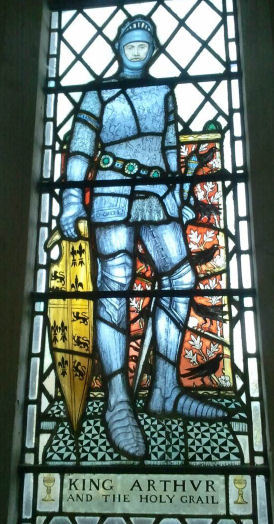
· Worldbuilding is key. The time period and specific location you choose will impact everything from clothing to food to housing to technology or lack thereof. Late medieval England (my choice because I have some knowledge of and more than 200 books on the period) will yield a completely different environment than outer space or modern day. Be cognizant of the balance of description and the other elements of your novel. Too many details, no matter how interesting or cool to you, can overwhelm readers and bury the story.

· Choose an active jumping off point. Deluging readers with backstory to get them up to speed on everything you know about the characters isn’t recommended (some authors use prologues or frontmatter to share the bare bones of their legend). Perhaps your hero or heroine is taking her first step of a quest, or danger is imminent.

· Choose your tone(s). How dark or light will you go? Will you find a humorous angle? The TV show Once Upon a Time is a good example of how to do both when revisiting fairytales. And what will your intimacy level be...do you prefer sweet, hot, or something in between? If there’s any violence, how graphic will you go?
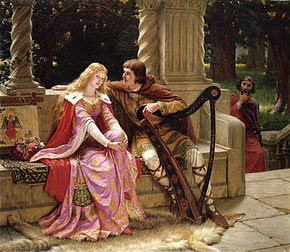
· How many paranormal elements will you incorporate? Will you take a “normal” legend and make it paranormal, and if so, what percent of your story will be devoted to that? Or will you use a legend that already incorporates magic, non-human and/or mythical beings, etc., and expand upon or limit the supernatural?
If you want to take on a legend, how do you find one? Just search “myths and legends” on Amazon to find compilations. A quick internet search led to many pages just for English characters: Wikipedia.
Happy writing!Ruth
My Once & Future Love(Unsung Knights of the Round Table #1)

Morgan ap Myrddin must rescue his father, Merlin, from imprisonment. But enemies have wounded him, draining his powers.
Annora of Amberton flees her castle to seek proof that she’s not a lunatic as her uncle declared when claiming wardship over her and her lands.
Morgan stumbles upon Annora’s cottage and enlists her aid. As he helps her in return, respect and undeniable desire spark. But he won’t succumb to the lure of a mortal woman as his father did. She’s wary of caring for a man who won’t discuss his past. When he tells her he’s a Knight of the Round Table, she fears he’s the lunatic. Secrets, danger and destiny thwart the power of love.
Amazon
Excerpt
Northern Wales, September 1463
Flames of agony seared Morgan ap Myrddin. Blood, crimson as the dragon on his long-lost banner, streamed down his side, soaking remnants of the shirt pressed against his arrow wound to staunch the flow. He sped through the forest, cracking branches in his haste.
Heart pounding hard as a hammer on an anvil, he caught his breath behind a wide oakand leaned heavily on the rough bark. Amidst a shower of autumn leaves, he closed his eyes to focus his dwindling strength and energy on listening. What he sought lay beyond the wind swishing through the trees.
He sought the footsteps of his enemies.
Morgan’s ears, keener than those of any mortal man’s, strained to capture the distant sounds of an army on the move. The faint rumble, the subtle shaking of the ground beneath his feet told him what he needed to know. His enemies approached.
Never before, in thirty-two mortal years fraught with danger, had he come so close to being trapped.
Closing his eyes, he raised his arms to summon aid, to call upon his vast powers. Nothing happened. Nothing changed.
Icy needles of unfamiliar fear pierced him. “Taliesin preserve me,” he breathed.
No answer. His Mysteries had faded so, he couldn’t even hear the wisdom of his ancestors.
Morgan ran. He stumbled into a tree, dizzy from loss of blood. He had to move faster or they would capture him.
And his father would remain imprisoned for all eternity.
Giveaway
Ruth Kaufman is giving away two ebook copies of "My Once & Future Love."US Residents Only

All you need to do is answer this question:
“Who’s your favorite character in the tales of King Arthur?”
Leave your answer in the comments at the bottom of this post.
Giveaway Rules
• Leave your answer in the comments at the bottom of this post.• Giveaway ends at 11:59pm BST on March 25th.You must be 18 or older to enter. • Giveaway is only open to US Residents only. •Only one entry per household. • All giveaway entrants agree to be honest and not cheat the systems; any suspect of fraud is decided upon by blog/site owner and the sponsor, and entrants may be disqualified at our discretion.•Winners will be announced in the comments.• Winner has 48 hours to claim prize or new winner is chosen.
Amazon
Ruth Kaufman
 -->
-->
Ruth Kaufman’s Wars of the Roses Brides trilogy (AT HIS COMMAND, FOLLOW YOUR HEART and THE BRIDE TOURNAMENT) reached #1 historical romance on Amazon in the US, Canada and Australia. Her romantic comedy MY LIFE AS A STAR is the standalone prequel to MY LIFE AS AN EXTRA. Accolades include 2016 Booksellers' Best Award double winner (Best Historical and Best First Book) and Romance Writers of America® Golden Heart® winner.
Ruth is also an on-camera and voiceover talent with a J.D. and a Master's in Radio/TV. Credits include independent feature films, short films, web series, national TV commercials and thousands of voiceovers. She presents workshops for authors and actors and is a comedic storyteller.
Connect with Ruth: Website • Facebook • Facebook: Ruth Kaufman Actor & Author • Twitter • Instagram • Amazon Author Page.
I’m a pantser (meaning I write by the seat of my pants), not a plotter (who plans ahead by writing a synopsis of the entire book, or outlining scenes and/or plot points), so each story develops as I go. When an opening scene came to mind of a wounded man fleeing his enemies, I didn’t know who he was, why he was running or who was after him.
Eventually he let me know he was a Knight of the Round Table. Hmmm. That meant I’d have to take on the legend of King Arthur (KA) and his knights. A daunting task, because many readers know some of the tales first told hundreds of years ago and are aware of how they’ve changed over time. They’ve read the novels and have seen the movies.

Could I find a way to make the legend fresh and interesting, yet retain enough of the familiar and beloved elements to ground readers?
I hope what I learned helps you:
· Take some time to absorb what you can about the cast of characters and events that are in the public domain. Pay attention to significant variations, important themes, values and motifs. I already had a good grasp of and appreciation for KA, and had a shelf full of books of tales and analysis about him and his knights.

· Decide what and who you’ll retain, what you’ll let go, what you’ll change and what you’ll add. I decided to write about the unsung knights no one has heard about, giving me freedom to create characters from scratch. Another Arthurian author may, for example, choose to develop his/her version of Lancelot as a hero rather than make him a secondary character or not feature him at all.

· Worldbuilding is key. The time period and specific location you choose will impact everything from clothing to food to housing to technology or lack thereof. Late medieval England (my choice because I have some knowledge of and more than 200 books on the period) will yield a completely different environment than outer space or modern day. Be cognizant of the balance of description and the other elements of your novel. Too many details, no matter how interesting or cool to you, can overwhelm readers and bury the story.

· Choose an active jumping off point. Deluging readers with backstory to get them up to speed on everything you know about the characters isn’t recommended (some authors use prologues or frontmatter to share the bare bones of their legend). Perhaps your hero or heroine is taking her first step of a quest, or danger is imminent.

· Choose your tone(s). How dark or light will you go? Will you find a humorous angle? The TV show Once Upon a Time is a good example of how to do both when revisiting fairytales. And what will your intimacy level be...do you prefer sweet, hot, or something in between? If there’s any violence, how graphic will you go?

· How many paranormal elements will you incorporate? Will you take a “normal” legend and make it paranormal, and if so, what percent of your story will be devoted to that? Or will you use a legend that already incorporates magic, non-human and/or mythical beings, etc., and expand upon or limit the supernatural?
If you want to take on a legend, how do you find one? Just search “myths and legends” on Amazon to find compilations. A quick internet search led to many pages just for English characters: Wikipedia.
Happy writing!Ruth
My Once & Future Love(Unsung Knights of the Round Table #1)

Morgan ap Myrddin must rescue his father, Merlin, from imprisonment. But enemies have wounded him, draining his powers.
Annora of Amberton flees her castle to seek proof that she’s not a lunatic as her uncle declared when claiming wardship over her and her lands.
Morgan stumbles upon Annora’s cottage and enlists her aid. As he helps her in return, respect and undeniable desire spark. But he won’t succumb to the lure of a mortal woman as his father did. She’s wary of caring for a man who won’t discuss his past. When he tells her he’s a Knight of the Round Table, she fears he’s the lunatic. Secrets, danger and destiny thwart the power of love.
Amazon
Excerpt
Northern Wales, September 1463
Flames of agony seared Morgan ap Myrddin. Blood, crimson as the dragon on his long-lost banner, streamed down his side, soaking remnants of the shirt pressed against his arrow wound to staunch the flow. He sped through the forest, cracking branches in his haste.
Heart pounding hard as a hammer on an anvil, he caught his breath behind a wide oakand leaned heavily on the rough bark. Amidst a shower of autumn leaves, he closed his eyes to focus his dwindling strength and energy on listening. What he sought lay beyond the wind swishing through the trees.
He sought the footsteps of his enemies.
Morgan’s ears, keener than those of any mortal man’s, strained to capture the distant sounds of an army on the move. The faint rumble, the subtle shaking of the ground beneath his feet told him what he needed to know. His enemies approached.
Never before, in thirty-two mortal years fraught with danger, had he come so close to being trapped.
Closing his eyes, he raised his arms to summon aid, to call upon his vast powers. Nothing happened. Nothing changed.
Icy needles of unfamiliar fear pierced him. “Taliesin preserve me,” he breathed.
No answer. His Mysteries had faded so, he couldn’t even hear the wisdom of his ancestors.
Morgan ran. He stumbled into a tree, dizzy from loss of blood. He had to move faster or they would capture him.
And his father would remain imprisoned for all eternity.
Giveaway
Ruth Kaufman is giving away two ebook copies of "My Once & Future Love."US Residents Only

All you need to do is answer this question:
“Who’s your favorite character in the tales of King Arthur?”
Leave your answer in the comments at the bottom of this post.
Giveaway Rules
• Leave your answer in the comments at the bottom of this post.• Giveaway ends at 11:59pm BST on March 25th.You must be 18 or older to enter. • Giveaway is only open to US Residents only. •Only one entry per household. • All giveaway entrants agree to be honest and not cheat the systems; any suspect of fraud is decided upon by blog/site owner and the sponsor, and entrants may be disqualified at our discretion.•Winners will be announced in the comments.• Winner has 48 hours to claim prize or new winner is chosen.
Amazon
Ruth Kaufman
 -->
--> Ruth Kaufman’s Wars of the Roses Brides trilogy (AT HIS COMMAND, FOLLOW YOUR HEART and THE BRIDE TOURNAMENT) reached #1 historical romance on Amazon in the US, Canada and Australia. Her romantic comedy MY LIFE AS A STAR is the standalone prequel to MY LIFE AS AN EXTRA. Accolades include 2016 Booksellers' Best Award double winner (Best Historical and Best First Book) and Romance Writers of America® Golden Heart® winner.
Ruth is also an on-camera and voiceover talent with a J.D. and a Master's in Radio/TV. Credits include independent feature films, short films, web series, national TV commercials and thousands of voiceovers. She presents workshops for authors and actors and is a comedic storyteller.
Connect with Ruth: Website • Facebook • Facebook: Ruth Kaufman Actor & Author • Twitter • Instagram • Amazon Author Page.
Published on March 04, 2019 23:00
March 3, 2019
Join #HistoricalRomance author, Elizabeth Keysian, as she takes a look at the allure of lace... #History #Regency @EKeysian
The allure of lace - a brief historyBy Elizabeth Keysian
For me, understanding lace was a bit like Monty Python‘s quest for the Holy Grail – one minute I thought I’d “got it”, the next I hadn’t; and there seemed to be plenty of Frenchman (and Italians, and Belgians) thumbing their noses at me along the way. And in the end I discovered it was a pointless quest and I was mad enough to be put away for good.
And yet, the allure of lace was so strong, I’ve had to keep trying. Antique handmade lace is complex, valuable, and mindbogglingly time-consuming to make (it takes approximately 10 hours to make one square inch of a fine Honiton lace). I really wanted to understand how a textile art that essentially began with cutting holes in perfectly good pieces of linen became so popular.
I also wanted to be able to shout at TV costume dramas, “That type of lace is completely wrong for the Regency, you idiots.” Because it usually is. Handmade lace is so varied, one can not only work out roughly which quarter of what century it was made, one can also tell the provenance. We had a flourishing and varied lacemaking industry in this country (Great Britain) in the late 18th and 19th centuries. And if we weren’t happy with our own products, we could smuggle in the really valuable stuff from Flanders or Italy. Such illicit importation, cheerfully known by its operators as “free trade”, was rife during the maritime blockade against Napoleon Bonaparte. I made much use of this fact in my Regency romantic adventure, “A Perilous Passion”, where the hero and heroine first meet when she spots some contraband lace floating in the sea. He thinks she’s about to drown herself...which is where the fun and games begin.

So how did lace originate? It is akin to embroidery really – it’s what happens when one removes the background fabric from parts of the embroidery. Or one can just cut shaped holes in the fabric (generally finely woven linen) and then infill those gaps. This is a form of lacemaking called “cutwork” and one of the earliest styles of lace, Italian Reticella, was made this way. Below are two examples I photographed in the Burano lace museum in Venice. They are late 16th or early 17th century and both include human figures in the design. The edges of the cut cloth are secured with buttonhole stitch to stop them fraying. Buttonhole is the main type of stitch used in what is known as “needle” lace. The remaining areas of fabric are held in position by needle-made “bars“ or “brides”.
Gradually this early form of lace developed into a self-supporting textile, as can be seen in the next pair of images.
 Cutwork reticella lace.
Cutwork reticella lace. Cutwork reticella lace.
Cutwork reticella lace.At this stage in its evolution, triangular pointed edges were popular but patterns for lace changed with the fashions.
 Venetian Reticella lace.
Venetian Reticella lace. Venetian Reticella lace.
Venetian Reticella lace.In the late 16th and early 17th century, metal lace was favoured, made from fine gold and silver foil, or wrapped thread. Even linen was expensive, and it was just as important for our aristocratic ancestors to be portrayed wearing lace as it was jewellery.
The next image is a close-up of a Venetian needle lace.
 Venetian needle lace.
Venetian needle lace.One can see the thick buttonhole stitch edging. The area which, in Reticella lace, would have contained linen cloth, has now been infilled with different styles of “clothwork”, all made with a single needle and thread.
As you can see in the next photo, lace had to be designed before it was made. The outline of the design is drawn onto thick paper and is overlaid by thick threads, sewn into place right through the pattern paper and the supporting cloth beneath. Once the gaps between the outline threads have been infilled with decorative needlework, the lace can be removed from its backing.
 Lace over pattern.
Lace over pattern.The Venetian island of Burano developed its own style of needle lace, using a mesh foundation instead of bars to keep the pattern together. The mesh in the example below was handmade, as machine-made net did not become available until the early 1800s. This net or mesh is known as a “ground”. The shape of the mesh varied depending on the style and provenance of the lace. Burano grounds had a ladder-like appearance.
 Burano lace.
Burano lace.I had such fun trying to identify the lace collection in the museum where I used to work that I decided to have a go at making my own lace. I thought if I made it, I would understand this textile miracle better. I opted to make bobbin lace, as this looked much easier than needle lace. Needless to say, my novel-writing became so time-consuming, all I ended up doing was covering the lace pillow with fabric, and putting pretty beads on the ends of the bobbins to distinguish them from one another. But I haven’t given up hope of one day taking the project further.
Bobbin lace can look similar to needle lace unless one knows what to look for, but it is less likely to have any raised areas than needle lace, and it often features geometric and repetitive designs.
I have made my own little collection of bobbin lace, and had a fascinating time looking at it under the magnifier and trying to work out if it is hand or machine-made. In general, machine-made lace (from the mid 1800s onwards) has a fuzzy appearance, and it’s hard to follow the path of any single thread.
This close-up image of a bobbin “tape lace” shows where the “clothwork”, or woven areas are joined by “bars”. The other photo is of an appliqué lace, where separately made motifs have been applied to a net “ground”.
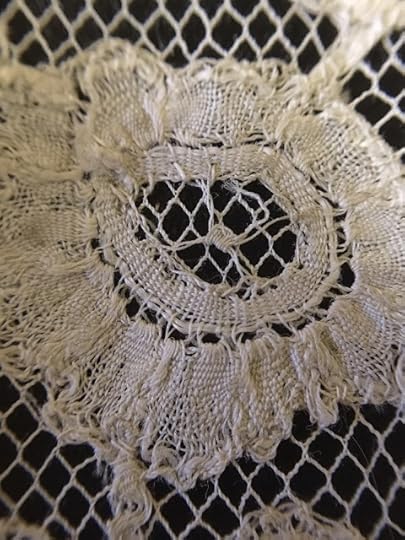 Appliqué lace.
Appliqué lace.
 Bobbin lace
Bobbin laceThe lace industry of Georgian and Victorian Britain was a tough one for its employees. The workers were mainly women, but children as young as five could be employed. Each worker specialised in a particular part of the process, so the lace could be mass-manufactured. Hours were long, pay was poor, and doing such fine work in poor light must have been really hard on the eyes. So although I find this textile beautiful, I remain aware of the agonising toil that sometimes went into making it.So, that’s my swift voyage through the history of lace. I claim the right to have made mistakes. I really don’t think I understand more than the basics even now; each time I try to identify some of my lace, I end up more confused than when I started. If I ever get to make any of my own, I’ll let you know.
A Perilous Passion

Miss Charlotte Allston's curious nature has always led her to trouble. This time, she's tangled in a web of traitors and spies and quite literally swept off her feet by a handsome stranger. But all is not what it seems with the Earl of Beckport.
The earl is living incognito, hunting a band of smugglers at the center of a plot for the French to invade England. The enigmatic Miss Allston becomes a person of interest...and not just in the smuggling case. Passion flares swift and hot between the two. But when her attempts to help with his secret mission only endanger it, he must question where her loyalty truly lies.
When Charlotte is captured by the very traitor he's after, the earl must decide between redemption...and love.
A stand-alone Regency romantic adventure, with smugglers, spies and a hot historical hero! “A Perilous Passion” out now from Entangled.
Amazon
Elizabeth Keysian
 Bestselling author Elizabeth Keysian adores history and archaeology, and writes romances that give the reader an experience of travelling back in time.
Bestselling author Elizabeth Keysian adores history and archaeology, and writes romances that give the reader an experience of travelling back in time.She feels very British-despite her Viking ancestry-and loves creating rich backdrops for her stories based on real places and actual experiences. She used to be a re-enactor, so has sampled the living conditions, clothing, and smells of the past. She’s also sampled the food, which was actually pretty good.
Her characters battle their problems with both tears and laughter, but she always guarantees them a Happily Ever After, no matter what she’s put them through.
Subscribers to Elizabeth’s Key to Romance newsletter have access to exclusive content, contests and advance notice of bargains and freebie books: Newsletter Signup.
Elizabeth is a founder member of A Touch of Intrigue – a Gathering of Authors and Readers of Historical Romance. They have the best Facebook parties EVER. Please join up: HERE!
You can find Elizabeth on Facebook • Twitter • Pinterest.
Published on March 03, 2019 23:00
Have you heard? The Du Lac Chronicles series is only 0.99 each on Kindle for a Limited Time! #HistoricalFiction #KindleUnlimited

This is your chance to grab your copies of the multi award-winning and bestselling series – The Du Lac Chronicles.
The Du Lac Chronicles: Book #1 of The Du Lac Chronicles

A generation after Arthur Pendragon ruled, Briton lies fragmented into warring kingdoms and principalities.Eighteen-year-old Alden du Lac ruled the tiny kingdom of Cerniw. Now he half-hangs from a wooden pole, his back lashed into a mass of bloody welts exposed to the cold of a cruel winter night. He’s to be executed come daybreak—should he survive that long.When Alden notices the shadowy figure approaching, he assumes death has come to end his pain. Instead, the daughter of his enemy, Cerdic of Wessex, frees and hides him, her motives unclear.Annis has loved Alden since his ill-fated marriage to her Saxon cousin—a marriage that ended in blood and guilt—and she would give anything to protect him. Annis’s rescue of Alden traps them between a brutal Saxon king and Alden’s remaining allies. Meanwhile, unknown forces are carefully manipulating the ruins of Arthur’s legacy.
N.N.Light Award for Best Romance 2016.
Circle Of Books Rings Of Honor Awards 2016 Bronze Medal Winner
The Golden Box Book Publishing Golden Book Award 2017 Finalist
Discovered Diamond Award 2017
Amazon UK • Amazon US • Amazon CA • Amazon AU
The Du Lac Devil Book #2 of The Du Lac Chronicles [image error]
War is coming...
As one kingdom after another falls to the savage might of the High King, Cerdic of Wessex, only one family dares to stand up to him — The Du Lacs.
Budic and Alden Du Lac are barely speaking to each other, and Merton is a mercenary, fighting for the highest bidder. If Wessex hears of the brothers’ discord, then all is lost.
Fate brings Merton du Lac back to the ancestral lands of his forefathers, and he finds his country on the brink of civil war. But there is worse to come, for his father’s old enemy has infiltrated the court of Benwick. Now, more than ever, the Du Lac must come together to save the kingdom and themselves.
Can old rivalries and resentments be overcome in time to stop a war?
Readers' Favorite Finalist 2017
IAN Book Of The Year Award Finalist 2017
Golden Quill Award Winner 2017
Chill with a Book Readers' Award 2017BooksGoSocial Readers Choice Award Shortlisted 2017
The Grunter Award Winner 2017Discovered Diamond Award 2018
Discovered Diamond Cover of the Month ~ January 2018
Amazon UK • Amazon US • Amazon CA • Amazon AU
The Du Lac Princess Book #3 of The Du Lac Chronicles

The ink has dried on a Amandine's death warrant. Her crime? She is a du Lac.
All that stands in the way of a grisly death on a pyre is the King of Brittany. However, King Philippe is a fickle friend, and if her death is profitable to him, then she has no doubt that he would light the pyre himself.
Alan, the only man Amandine trusts, has a secret and must make an impossible choice, which could have far-reaching consequences — not only for Amandine, but for the whole of Briton.
Readers' Favorite 5 Stars
Chill with a Book Readers' Award 2018
Chill with a Book Cover of the Month 2018
Amazon UK • Amazon US • Amazon CA • Amazon AU
The Du Lac Prophecy Book #5 of The Du Lac Chronicles

Two Prophecies. Two Noble House. One Throne.
Distrust and greed threaten to destroy the House of du Lac. Mordred Pendragon strengthens his hold on Brittany and the surrounding kingdoms while Alan, Mordred’s cousin, embarks on a desperate quest to find Arthur’s lost knights. Without the knights and the relics they hold in trust, they cannot defeat Arthur’s only son – but finding the knights is only half of the battle. Convincing them to fight on the side of the Du Lac’s, their sworn enemy, will not be easy.
If Alden, King of Cerniw, cannot bring unity there will be no need for Arthur’s knights. With Budic threatening to invade Alden’s Kingdom, Merton putting love before duty, and Garren disappearing to goodness knows where, what hope does Alden have? If Alden cannot get his House in order, Mordred will destroy them all.
Chill with a Book Readers' Award 2018Chill with a Book Premier Readers Award 2018
Chill with a Book Cover of the Month 2018Discovered Diamond Award 2018 N.N.Light’s Book Heaven Book Award Winner — Historical Fiction 2018
Amazon UK • Amazon US • Amazon CA • Amazon AU
Mary Anne Yarde
 Mary Anne Yarde is the multi award-winning author of the International Bestselling Series — The Du Lac Chronicles. Set a generation after the fall of King Arthur, The Du Lac Chronicles takes you on a journey through Dark Age Briton and Brittany, where you will meet new friends and terrifying foes. Based on legends and historical fact, The Du Lac Chronicles is a series not to be missed.
Mary Anne Yarde is the multi award-winning author of the International Bestselling Series — The Du Lac Chronicles. Set a generation after the fall of King Arthur, The Du Lac Chronicles takes you on a journey through Dark Age Briton and Brittany, where you will meet new friends and terrifying foes. Based on legends and historical fact, The Du Lac Chronicles is a series not to be missed.Mary Anne is the founder of The Coffee Pot Book Club. She has been a professional reader since 2016 and in this time Mary Anne has reviewed many books for the big and small publishing houses, as well as books penned by her fellow indie authors. Mary Anne is also an editorial reviewer for BooksGoSocial. Mary Anne has been a judge for a prestigious Historical Fiction Book Award for the last three years, as well as being a Top Reviewer on Netgalley.
Born in Bath, England, Mary Anne Yarde grew up in the southwest of England, surrounded and influenced by centuries of history and mythology. Glastonbury — the fabled Isle of Avalon — was a mere fifteen-minute drive from her home, and tales of King Arthur and his knights were part of her childhood.
Connect with Mary Anne: Website • The Coffee Pot Book Club• Twitter • Facebook • Goodreads.
Published on March 03, 2019 22:30
March 2, 2019
#HistoricalFiction author, Dominic Fielder, is talking about how he created the characters for his fabulous book series The King’s Germans. Check out Dominic’s fabulous #NewRelease — The King of Dunkirk @Kings_Germans
Creating Characters for the King’s Germans: playing for keepsBy Dominic Fielder
I’m sure that most people have had an idea for a character in a story. After all, it’s one of the first questions we ask of children when they write in school. What’s your story about and who is in it? I write this having attempted to inspire the occasional bout of written or oral storytelling in a classroom. For characters to be, to exist, we as readers must want to know all about them. That is one of the main reasons why the single point of view story sells. We can immerse ourselves, identify with that person on the page, share their pain and hopefully their victory. At least we could until George R.R. Martin came along and made killing off his main characters a past time. I’m going to commit some form of heresy in saying that I’ve not read the books and only watched the series up to the Red Wedding, then it just became too painful. But what Martin has said subsequently on the death of main characters struck a chord with me “When my characters are in danger, I want you to be afraid to turn the page (and to do that) you need to show right from the beginning that you're playing for keeps.”For me, in wanting to write the story of the King’s German Legion, I knew that multiple perspectives would be needed. At that time, I had my eye more on the war in Portugal and Spain. In thinking about that basic question of ‘What’s the story about?’, the obvious answer was the soldiers. Men, women and families who had fled Hanover in 1803. And in considering the next question of ‘Why did they flee?’, it became necessary, not to start the story in 1808, or 1803, but at the outbreak of war in 1793. And that creates the next challenge for a writer and the reader. If a story arc is planned from 1793 to 1815, how can you expect to follow a single character all the way through this. The short answer is that you can’t. As I write this, it’s my intention that some of the King’s Germans from The Black Lions of Flanders and The King of Dunkirk will be present at the battle of Waterloo. Who they are and which side they will be fighting on, is still a mystery, even to me. Can multiple character point of views work? I very much hope so, as it’s the style that I’ve chosen to write in. Mary Anne Yarde very graciously described my attempts in the first book “Like a master puppeteer, Fielder has a firm control of a large cast of characters.”
I’m still learning my trade but I’m inspired by a man like Balzac, who is the master of characterisation. Graham Robb wrote in a biography that ‘Balzac's characters were as real to him as if he were observing them in the outside world’. It’s said that Balzac had around four thousand fully fleshed out characters.

I’ve no plans to visit that staggering number, but I know that the current cast, the first quartet of stories, will not wholly be the soldiers in the King’s German Legion on the 18th June 1815. So, who is there in the current crop that you might like? Sebastian Krombach: young, idealistic but quietly determined. His close friends are the Pinsk brothers, Tomas and Henry: tall gangling farm-hands turned soldiers when there were simply to many mouths to feed at home. Added to that is Andreas Reifener, forced to enlist in a deal between a priest, a city burgher and a baker. Reifener happens to be a reasonable cook and an excellent opportunist. Aided by Sergeant Winckler, a man not averse to making a profit but very averse to the chances of being killed, Reifener becomes the conduit for shady business transactions much against Krombach’s sense of fair play. Though such niceties are the least of Krombach’s problems. The King’s Germans are at war with themselves. Winckler must stave off the authoritarian Corporal Gauner, a brute of a man who takes an instant dislike to Krombach. All of these men serve in Second Company, 2nd Battalion, 10th Hanoverian Regiment: a company without a captain and a battalion without a commander. Captain Werner Brandt, a man ready to quit the army, finds himself convinced to stay when the new colonel, Jacob Neuberg arrives. Neuberg faces revolt from without the ranks of his own officers as his promotion has come at the cost of battalion tradition and the slighted Major Volgraf, who was expecting to be made commander, is a man with powerful friends. Added to this mixture is Erich von Bomm, Brandt’s closest friend. With a dubious reputation as a rake and having fought three duels over misunderstandings, the King’s Germans are at best a dysfunctional family.These are the King’s Germans at the very start of the Black Lions of Flanders. By the time we catch up with them in The King of Dunkirk, they have experienced their first taste of battle and an uneasy truce has been thrashed out in both Brandt’s Company (Second Company) and between the officers. In other posts on this blog tour, I will write about how minor characters have a habit of wanting to make their story heard, at least they do to me. For now though, I’d like to leave you with Krombach, feeling particularly moral, Reifener at his most opportunistic and the Pinsk brothers adding some light relief. This is the lull before the storm. The redcoats know that tomorrow or the day after, they will go into battle.Playing for keeps is about to become very real.
The King of DunkirkThe King’s Germans Book #2

May 1793: The French border.
Valenciennes, Paris then home! Every common soldier knows the popular refrain so why can’t the commanders see sense?
The protracted siege of Valenciennes exposes the mistrust between the allies. National interests triumph over military logic. The King’s Germans find themselves marching north to the coast, not east to Paris. Dunkirk has become a royal prize, an open secret smuggled to the French, who set a trap for the Duke of York’s army.
Lieutenant Erich von Bomm and Captain Werner Brandt find themselves in the thick of the action as the 14th Nationals, the Black Lions, seek their revenge. In the chaos of battle, Sebastian Krombach, working alongside Major Trevethan, the engineer tasked with capturing Dunkirk, must make a dreadful choice: to guide a battalion of Foot Guards to safety across the Great Moor or carry a message that might save the life of a friend.
The King’s Germans and the Black Lions do battle to determine who shall be crowned the King of Dunkirk.
Except
Seeburg: 21st May 1793Years of selling at fairs and festivals had not been wasted: Reifener was making a small fortune. He stood on the back of one of the Corps supply wagons addressing the growing crowd of redcoats. Either side of him two lanky soldiers toiled, passing out pairs of Flanders clogs to redcoats who had handed over a thaler to the baker turned shoe seller. “Ten pairs left, three small, seven mediums; who wants them? You’re out of luck if you’ve got big feet. Might make you popular with the ladies but you will have to make do with the army’s boots until the next delivery!”Krombach witnessed the scene with disbelief. He had left the Pinsk brothers for an hour while he had joined the line of soldiers at the blacksmith’s and now they were taking part in some form of open profiteering. A few moments later and Reifener was turning over empty crates. “All gone, sorry boys; nothing now until next week.”A press of disgruntled soldiers hurled insults in the direction of the baker’s boy turned soldier but most knew Reifener’s worth lay beyond the delicious meals he could concoct and his network within the Twenty. Reifener had become the conduit for goods and contraband, a fact that Krombach had chosen to overlook. Even Volgraf had conducted business with the privateer redcoat in the last few days and Sergeant Gauner had been chosen by the Major to settle the terms of trade.“What the hell is going on?” Krombach had pushed through the thinning ranks and reached the wagon. Reifener defaulted to a wide grin bordering on the look of a village fool, unaware of the cares of the world.“Just selling some clogs. Our boots are falling apart so a friend got hold of some of these and asked me to sell them. There’s nothing wrong with it.”“A friend? Selling from a back of a Corps Wagon? Glad the Provosts didn’t catch you!”“Actually...I...um…gave them a couple of pairs first. They seemed quite happy; said they had more pressing matters to attend to.”“And your friend, does he work for the Commissary General now?”Reifener began some tuneless whistling through a broad smile, punctured by gurgles of laughter. Krombach turned his attention to the Pinsk brothers, both helping to stack the empty crates, ready for the return trip.“And as for you two, what are you doing getting involved in all this?”“It’s all above board…well sort of. Don’t be so sour ‘Bastion, besides two weeks’ pay for two hours work.” Henry spoke working swiftly, casting glances across the sea of heads that populated the Hanoverian camp.“And,” said Tomas, “we saved you a pair.” He held a thick wooden clog on either side of his face. “Look what you’ve done to my poor ears. I’ve had to listen to you droning on for hours about those boots of yours. Besides it’s the fashion of the season for every soldier of taste and quality,” aping his most aristocratic air while gently throwing each of the shoes in the general direction of Krombach’s head.“They’re comfortable ‘Bastion and compliments of our ‘friend’,” Reifener added, as if that resolved the discussion. There was little doubt that the friend was Sergeant-Major Winckler, now attached to the British Commissary General’s office. ‘Old Boots’ selling new shoes; Winckler rarely missed a trick.“Cheer up, Krombach. I’ve almost missed your high moral standpoint on all matters; almost,” Tomas quipped and jumped down from the wagon followed by Henry. Both wore regulation white trousers, rolled up to the calf, resplendent with new wooden clogs.“Just like we used to wear on the farm, comfortable as you like,” Henry clapped Krombach on the shoulders, “you can thank me later.”A track ran through the middle of the sea of canvas tents heading straight for the wagon and either side the sea of redcoats parted. Company Sergeant-Major Roner strode through the mass of men, his eyes fixed on the four figures around the wagon. “Andreas now might be a good time to disappear,” Henry said, through the side of his mouth. Reifener had already spotted the potential danger and questions that might provoke uncomfortable answers. With considerable skill, he released the brake and the pair of heavy horses jolted forward, onto the cobbled track. Roner’s eyes followed the passage of the wagon and then resumed their fixed gaze at Krombach, sandwiched between the tall brothers. He halted; the soldiers around him stopped, eyes avoiding direct contact with the sergeant.“Soldiers of 2nd Battalion, hear my words! Form up for parade and Holy blessing at three o’clock.”He paused to turn and then stopped, observing sixty or seventy soldiers, each with trousers rolled up, proudly displaying new Flanders clogs.“And get those ‘things’ off your feet. You are soldiers, not peasants!” Roner stared coldly at the Pinsk brothers and Krombach before turning again and marching back towards the headquarters tent of 2nd Battalion.“Oh great,” Krombach shook his head. “The only man who has more clout within the Company than Gauner now thinks we are despoiling his men. Can this day get any worse?”“Well look on the brighter side,” Henry offered, “parade and religious service means only one thing; we won’t be sat on our arses this time tomorrow, we are headed for the front.”“And that is supposed to make me feel better?”“Yes. Why not? This time tomorrow you could be dead so none of this will really matter.” The three exchanged grim smiles and parted; Tomas loped off in the direction of the 1st Grenadiers and Krombach and Henry Pinsk returned to their canvas home to prepare their kit and Reifener’s, hoping that he would return before the hour was up. Amazon UK • Amazon US
Dominic Fielder
 The King’s Germans is a project that has been many years in the making. Currently I manage to juggle writing and research around a crowded work and family life. The Black Lions of Flanders (set in 1793) is the first in the King’s Germans’ series, which will follow an array of characters through to the final book in Waterloo. The King of Dunkirk will soon be released and I hope that the response to that is as encouraging as the reviews of Black Lions have been.
The King’s Germans is a project that has been many years in the making. Currently I manage to juggle writing and research around a crowded work and family life. The Black Lions of Flanders (set in 1793) is the first in the King’s Germans’ series, which will follow an array of characters through to the final book in Waterloo. The King of Dunkirk will soon be released and I hope that the response to that is as encouraging as the reviews of Black Lions have been.While I’m self-published now, I have an excellent support team that help me to produce what I hope is a story with professional feel, and that readers would want to read more than once. My family back-ground is in paperback book sales, so I’m very keen to ensure that the paperback design is something that I would be proud to put on my bookshelf.
I live in just outside of Tavistock, in Devon where I enjoy walking on the moors and the occasional horse-riding excursion as both inspiration and relaxation.
Connect with Dominic on: Facebook • Twitter • Goodreads.
Published on March 02, 2019 00:46
March 1, 2019
#BookReview — The Carpet Weaver of Uşak by Kathryn Gauci #HistoricalFiction #MustRead @KathrynGauci
 The Carpet Weaver of UşakBy Kathryn Gauci
The Carpet Weaver of UşakBy Kathryn Gauci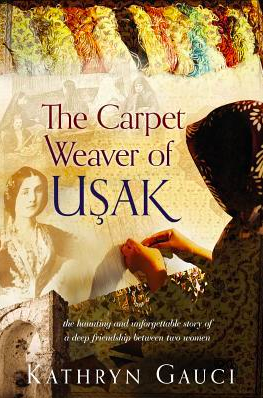
From USA Today Bestselling author Kathryn Gauci.
"Springtime and early summer are always beautiful in Anatolia. Hardy winter crocuses, blooming in their thousands, are followed by blue muscari which adorn the meadows like glorious sapphires on a silk carpet."
Set amidst the timeless landscape and remote villages of Anatolia, The Carpet Weaver of Uşak is the haunting and unforgettable story of a deep friendship between two women, one Greek Orthodox, the other a Muslim Turk: a friendship that transcends an atmosphere of mistrust, fear and ultimate collapse, long after the wars have ended.
Life in Stavrodromi and Pınarbaşı always moved at a slow pace. The years slipped by with the seasons and news was gathered from the camel trains passing through. The Greek and Turkish inhabitants of these two villages managed to pull together in adversity, keeping an eye out for each other. In the centre of the village stood the Fountain of the Sun and Moon. Here the locals congregated to celebrate the events in each other's life - their loves and losses, their hopes and dreams. When war broke out in a faraway place that few had heard of, a sense of foreboding crept into the village, as silently as the winter mists that heralded the onset of another long, cold winter.
1914: As the tentacles of The Great War threaten to envelop the Ottoman Empire, Uşak, the centre of the centuries-old carpet weaving industry in Turkey, prepares for war. Carpet orders are cancelled and the villagers whose lives depend on weaving, have no idea of the devastating impact the war will have on their lives.
1919: In the aftermath of the war, the tenuous peace is further destabilized when the Greek army lands in Smyrna and quickly fans out into the hinterland. Three years later, the population of Stavrodromi and Pınarbaşı are forced to take sides. Loyalties and friendships that existed for generations are now irrevocably torn apart. Their world has changed forever.

“I’ve read many books, listened to speakers, heard the survivor’s stories, but there always seems to be something missing; something more personal…”
“Not even death will part us, my love.”Sometimes words transcend time. If only words could halt it. Days slip by almost unseen. Months, seasons, years — all gone in the blink of an eye. What was once is no more and what is to come hardly matters. Nothing can bring her back. Nothing.
The past haunts Christophorus Plato Stavrides, and yet he never speaks of it. His grief is silent — a private torture. All he has left of his beloved Aspasia is their daughter, an old photograph, some silk slippers, and a memory. What he would give to hold Aspasia in his arms again. To look into her gentle face, and make love to her under a starlight sky.
Aspasia had been a talented weaver of carpets. Such skill. Such dedication. Why? Why could the world not have left them alone? They had been happy. Content. They were meant to have had a life together. A long life. It would have been a life built on a foundation of love, family, and carpet weaving. What had they known of war? What had they known of hate? It was those in power that brought the death and the destruction, not them. Not their neighbours. Why? What different lives they could have had if the soldiers had not come.
However, time marches on regardless, and now Christophorus is an old man. It breaks Christophorus’ heart to know that his grandson, Christos, has no interest in the carpet weaving industry of his forefathers. It is a university education which Christos seeks — and with that comes questions. So many questions and until now, Christophorus has avoided answering them. His secrets were his to keep. But, the boy is persistent, and maybe it would not hurt to tell his grandson and his daughter the truth about what happened all those years ago. And although it will open wounds that have never really healed, Christophorus knows that his story and more importantly Aspasia’s story, should be told.
From the busy industrial town of Uşak, the tranquillity of the sleepy village of Stavrodromi and Pınarbaşı, to the horror of the battle at Sarıkamış and the desperate journey to the relative safety of Constantinople, The Carpet Weaver of Uşak, by Kathryn Gauci is the enthralling story of a village torn apart by war and a friendship that could never be destroyed.
Some books seduce you by their opening sentence and do not let go of you until the final full-stop. The Carpet Weaver of Uşak is such a book. Gauci has lavishly evoked the world in which this remarkable novel is set in, and she has woven a tale as complicated and yet as beautiful as any Turkish carpet design. The narrative is flawless, and the story is unforgettable.
Gauci deals with the history of this time with sensitivity as well as a realism that is almost tangible. The plight of the villagers of Stavrodromi and Pınarbaşı is utterly heartbreaking. Theirs was a sleepy village where for generations nothing had changed, and the fact that the inhabitants were a mix of Greek Orthodoxs and Muslim Turks mattered not. First and foremost, they were neighbours. Friends. And now they were being asked to hate each other. The relationships dynamics within the village during these troubled times was masterfully portrayed.
Gauci has embroidered into this book a kaleidoscope of emotions — love, hate, fear, forgiveness — nothing of human nature is left unexplored. The relationship between Aspasia and her best friend Saniye clearly demonstrated the love that these two women had for each other. According to the law they were meant to despise each other, and instead, they both performed extraordinary acts of courage to protect one another. It was very humbling to read.
Likewise, the gentle love story of Christophorus and Aspasia was a wonderful work of art. They are both highly appealing characters whom I adored instantly. Their story is utterly absorbing and incredibly heartwarming. Although, I will warn you, be prepared to shed a few tears — I certainly did.
The Carpet Weaver of Uşak is, without a doubt, a monumental work of scholarship. Not only does Gauci have a keen academic eye for the history of this era, as well as the history and traditions of carpet weaving, she also has a gift for what can only be described as crystalline storytelling. This is a story that does not threaten to mesmerise — it does.
I Highly Recommend.
Review by Mary Anne Yarde.The Coffee Pot Book Club.
Amazon UK • Amazon US
Kathryn Gauci
 Kathryn Gauci was born in Leicestershire, England, and studied textile design at Loughborough College of Art and later at Kidderminster College of Art and Design where she specialised in carpet design and technology. After graduating, Kathryn spent a year in Vienna, Austria before moving to Greece where she worked as a carpet designer in Athens for six years. There followed another brief period in New Zealand before eventually settling in Melbourne, Australia.
Kathryn Gauci was born in Leicestershire, England, and studied textile design at Loughborough College of Art and later at Kidderminster College of Art and Design where she specialised in carpet design and technology. After graduating, Kathryn spent a year in Vienna, Austria before moving to Greece where she worked as a carpet designer in Athens for six years. There followed another brief period in New Zealand before eventually settling in Melbourne, Australia.Before turning to writing full-time, Kathryn ran her own textile design studio in Melbourne for over fifteen years, work which she enjoyed tremendously as it allowed her the luxury of travelling worldwide, often taking her off the beaten track and exploring other cultures. The Embroiderer is her first novel; a culmination of those wonderful years of design and travel, and especially of those glorious years in her youth living and working in Greece – a place that she is proud to call her spiritual home.
Her second novel, Conspiracy of Lies, is set in France during WWII. It is based on the stories of real life agents in the service of the Special Operations Executive and The Resistance under Nazi occupied Europe. To put one’s life on the line for your country in the pursuit of freedom took immense courage and many never survived. Kathryn’s interest in WWII started when she lived in Vienna and has continued ever since. She is a regular visitor to France and has spent time in several of the areas in which this novel is set.
Connect with Kathryn: Website • Twitter • Goodreads.
Published on March 01, 2019 21:30
#Book Review — The Warramunga's War, by Greg Kater #HistoricalFiction #WWII @gregkaterauthor
 The Warramunga's WarBy Greg Kater
The Warramunga's WarBy Greg Kater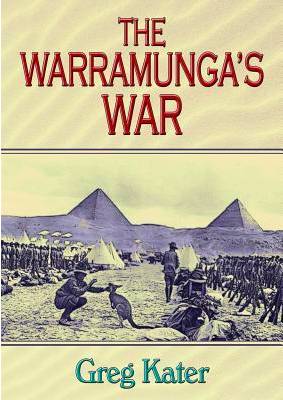
The Warramunga's War is a sweeping narrative of the friendship that forms between a young Australian army officer, Jamie Munro, and an educated half-caste Warramunga aboriginal NCO, Jack 'Jacko' O'Brien, during the Syrian campaign against the Vichy French in World War II. Jacko rescues a wounded Jamie after which they are conscripted in Cairo by MI6. Here, Jamie and Jacko learn about the seamy side of war in counterespionage as they track down German spies. The principal fictional characters interact with actual historical figures and events throughout the story.
As the desert war escalates to the west of Cairo, the MI6 team confuses the enemy with misleading radio messages using German codes and using local entertainers as undercover agents. On one of his day leaves, Jacko meets a beautiful young Syrian-French girl and a strong romantic bond forms between the two during his time in Cairo.
Following the end of the desert war, Jamie and Jacko are assigned to wartime intelligence work in Southeast Asia. After the end of the Pacific war, they initiate the Darwin operations of the CIS, the Commonwealth Investigation Service. On the trail of two suspected wartime German agents, they discover the agents have formed a dangerous criminal gang with an individual they had known during their time in Cairo. The tracking skills of the Warramunga are needed to finally catch up with the murderous gang in Western Australia's Kimberley region.

“I needed some fellows who are not known here and have seen action and it was suggested that I ask General Allen for a couple of men who had distinguished themselves in the Syrian campaign. That’s why you are here.”
Australian army officer, Jamie Munro of the 7th Division should be dead. If it were not for the bravery and the quick thinking of Corporal Jack “Jacko” O’Brien, then he would be. Jamie cannot remember much about what happened after he was hit by shrapnel, but he did know that Jacko carried him away from the danger and all the way to the hospital. For that, Jamie is eternally grateful.
Now that the Syrian campaign against the Vichy French has ended, Jamie and Jacko wonder where they will be conscripted to next. They did not expect to end up in Cairo, working alongside MI6.
They may not be in the direct firing line now, but counterespionage comes with its own set of challenges. Along with Corporal Matthew MacAulay from the 9th Division, they track down the German spies in the area and feed them with misleading information. However, this is a dangerous world, where trust is not so easily won, and danger lurks around every corner.
The hunt for German spies is not the only thing Jamie and Jacko have to worry about. For one of their agents, a young dancer called Farida, has been found dead. Murdered. Major Harold Hardcastle from the Palestine Police Force tells them that Farida is not the only one who has died under such terrible circumstances. MI6 must work with the Palestine Police Force to catch this serial killer, but it is a task that turns out to be easier said than done and it will take them across two continents.
From the war in Syria to the wild outback of Western Australia, The Warramunga’s War, by Greg Kater is the enthralling story of two unlikely soldiers who are thrown together by circumstance and then face unprecedented challenges in the fight against enemy espionage.
The Warramunga’s War is filled with non-stop action, cliff-hanger tension, and characters that seem to leap off the page. With an exciting narrative that is backed up by confident research, Kater is the kind of author that makes historical fiction lovers prick up their ears and take notice.
There was nothing I did not love about the book. The historical backdrop was spectacular. There is enough plot twists to satisfy the hardest of critics. The writing is elegant and engaging, and the story is fabulous. This is the kind of novel you can immerse yourself in and forget about everything else for a couple of hours.
I adored the characterisation of Jacko. His humanity and his bravery were inspiring. His relationship with the beautiful Monique gave this story a moment of peace during times of trouble. Likewise, Jamie is incredibly heroic. His actions are always for the greater good. Jacko and Jamie are an unlikely pair, but they work so well together. It was a pleasure to witness their friendship strengthen throughout the course of this book.
There are several seedy antagonists in this story, and although they do some terribly despicable crimes, Kater strikes the right balance when describing their actions. He goes into just enough detail to make you loathe them, but then he stops so as not to make this book an uncomfortable read. There is a who-done-it mentality to this story regarding the murders, and I have to admit, I missed all the little clues that Kater threw at me!
Kater has researched this time in history with scrupulous care. His attention to detail has to be commended. Kater’s portrayal of Cairo and Australia was wonderful and authentic as well as being luxuriantly detailed — I could almost feel the heat of the midday sun. His portrayal of the people in these two countries during this era was magnificent. This book is an example of historical fiction at its very best.
The Warramunga’s War was everything I hoped it would be and then some. I cannot wait to read book #2 of this remarkable trilogy.
I Highly Recommend.
Review by Mary Anne Yarde.The Coffee Pot Book Club.
Amazon UK • Amazon AU • Amazon US
Greg Kater
 Greg Kater is an Australian-based author. He lives in Sanctuary Cove, Gold Coast, Queensland and has recently retired from a 55-year international career in the resources industry. The Warramunga’s War is his first work of fiction. He has since written and published two more books, The Warramunga’s Aftermath of War and Skills of the Warramunga, altogether comprising a trilogy.The principal fictional characters interact with actual historical figures and events which have been rigorously researched. The subject of the novel is partly inspired by the experiences of the author’s father during the war in the Middle East, and partly by his own experiences in northern Australia where he worked extensively throughout the Northern Territory and the Kimberley.
Greg Kater is an Australian-based author. He lives in Sanctuary Cove, Gold Coast, Queensland and has recently retired from a 55-year international career in the resources industry. The Warramunga’s War is his first work of fiction. He has since written and published two more books, The Warramunga’s Aftermath of War and Skills of the Warramunga, altogether comprising a trilogy.The principal fictional characters interact with actual historical figures and events which have been rigorously researched. The subject of the novel is partly inspired by the experiences of the author’s father during the war in the Middle East, and partly by his own experiences in northern Australia where he worked extensively throughout the Northern Territory and the Kimberley.Connect with Greg: Website • Amazon Author Page • Facebook • Twitter • Goodreads.
Published on March 01, 2019 21:00
#BookReview — Midwife of Normandy (Secrets of the Austen Midwives Book 1) By Carole Penfield #HistoricalFiction #France

Midwife of Normandy (Secrets of the Austen Midwives Book 1)By Carole Penfield
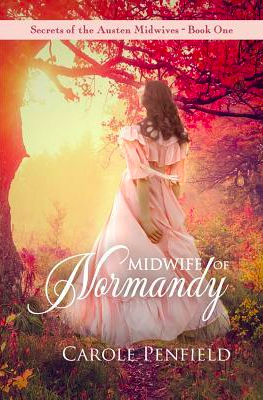
Clare Dupres, ambitious young Huguenot midwife living in turbulent 17th century France, struggles to save her family and career from the terrors of tyrannical King Louis XIV.
On the brink of womanhood, she records in her journal the grand plan for her perfect life--marriage to the man she loves, renovation of mysterious Maison Dupres as her home, and a rewarding profession. The key to her plan lies in "the magic elixir," her ancestors' secret formula for pain-free childbirth, which she offers solely to wealthy aristocratic women.
But King Louis' increasing pressure on Huguenots to convert to Catholicism shatters Clare's dreams. Her lover forced to flee France, she is compelled to marry his boring brother. Then she is banned from practicing midwifery. Yearning to continue her profession coupled with fear that her children will be kidnapped by Papists, Clare tries to convince her stubborn husband to move to England, but he is blind to the growing menace. When danger lurks in the form of the King's dreaded Dragonnade soldiers, she must summon all her strength and determination to save her family.
Can Clare succeed in getting her family safely out of France before it is too late?

I was drawn immediately into Carole Penfield's Midwife of Normandy (Secrets of the Austen Midwives Book 1), through the excellent descriptions of Clare, her childhood home, family, and experiences.
Clare Dupres is the daughter of an expert midwife. When Clare reaches her early teen years, she receives, as a birthday gift, a beautiful journal from her mother. In this, she is supposed to record her mother’s lessons and advice, so that Clare may eventually take her place as the town’s midwife. However, as well as essential notes on herbs, elixirs and methods, Clare begins to note her own thoughts, and set out how her life should unfold: providing care to the women of the town and receiving her just rewards in return.
Alas, as with many plans, life does not go exactly the way Clare intended it to go. She falls for her handsome cousin, Pierre. However, Pierre is forced to leave France by King Louis increasingly harsh rules for Huguenots in his Catholic France, which leaves Clare with no choice but to marry Pierre’s dull brother Jacques instead.
Life as a merchant’s wife is not for Clare, and she continues to practise her beloved midwifery, making powerful friends in Rouen as she does so. But it isn’t long before the king’s rules prevent even this, and life becomes dangerous for her and her devout husband. With appalling risks to her family, Clare must act, and try to get them all safely out of the country.
I was drawn immediately into Carole Penfield's Midwife of Normandy (Secrets of the Austen Midwives Book 1), through the excellent descriptions of Clare, her childhood home, family, and experiences. Throughout the novel, the threat of King Louis’ rulings against the Huguenots is evident, and growing, but is not always front-and-centre, tied in with the usual domestic issues befalling many a newly-wedded couple.
Following news that the Edict of Nantes, the law which gave Huguenots the right to worship in their own way, is possibly to be revoked, the pressure and pace of the novel mounts, along with the growing urgency of Clare’s determination that she and her family will not fall prey to the brutality some of their faith are being subjected to. When the dreaded dragonnades begin to flood the country and reach Rouen itself, the book shifts again, with almost the sense of a thriller.
In terms of the writing, both character and plot developed naturally as the story continued, with the motives and drive of each character feeling believable throughout. Clare herself is an interesting lead, driven to do better than her mother in terms of the rewards she gains for her midwifery skills. Her mother may have been contented with chickens or other meat; Clare wants coins, jewels, and connections to the higher echelons of society. The supporting characters are well-drawn, each given just the right level of detail so that we can get to know them, but no time is wasted providing an extensive description of characters we will only be meeting briefly.
There were, on occasions, the odd word which jarred in terms of historical accuracy, but this is not an era I know inside out, and I could be wrong. References by a soldier to ‘the kid’ felt odd, as did the use of ‘fall’ rather than ‘autumn’, but these were few and far between. It did not detract from my overall enjoyment of the novel.
Midwife of Normandy, (Secrets of the Austen Midwives Book 1) is well-written, well-paced, with a story which carries you along. If you enjoy a seventeenth-century setting, then this is the book for you. Having read a summary of the following novel, it’s definitely one I would look forward to reading.
I Highly Recommend.
Review by Jennifer C. Wilson.The Coffee Pot Book Club.
Amazon UK • Amazon US
Carole Penfield
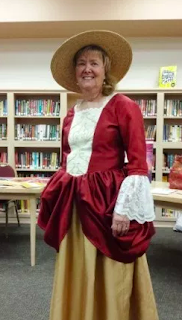 Carole Penfield was born in Chicago, Illinois. After graduating from University of Illinois with a Bachelor of Arts degree in elementary education, she accepted a position as first grade teacher in Webster Groves, Missouri. There she enjoyed adapting fairytales into short scripted plays for her young students to perform at holiday school events.
Carole Penfield was born in Chicago, Illinois. After graduating from University of Illinois with a Bachelor of Arts degree in elementary education, she accepted a position as first grade teacher in Webster Groves, Missouri. There she enjoyed adapting fairytales into short scripted plays for her young students to perform at holiday school events.Subsequently becoming a stay-at-home mom with four young children in Newton, Massachusetts, she organized and directed the Merry Moviemakers, an aspiring troupe of neighborhood children who gathered in her basement to create original theatricals. Before the advent of video cameras, Carole used her 8 mm movie camera set on a tripod to film these young actors. One of their amateur productions, “Terry Tooth Learns the Terrible Truth,” premiered at the Boston Women’s Film Festival. Unfortunately, no copy of this early work survives.
After moving with her family to Arizona, Carole returned to college earning a law degree in 1981 and joining the large Phoenix firm, Lewis & Roca. Five years later she was invited to become a partner, specializing in the field of employment law. After dedicating seventeen busy years to legal writing and court appearances on behalf of her many clients, she made a life-changing decision to seek a less stressful life style. Like many aspiring authors, she dreamed of writing a novel, but still needed to earn a living.
In 1997, Carole and her second husband Perry Krowne relocated to rural Northern Arizona, where she became a combination small-town lawyer and retail doll store co-owner. In the beginning, dolls were displayed in the law office waiting room and empty doll boxes stored on the conference room shelves, next to the Arizona Revised Statutes. For a few years, Amanda Jane’s Doll Shoppe was Carole’s pride and joy and provided her the creative satisfaction of writing radio and television commercials for local stations, as well as advertising copy for magazines and newspapers. Sadly, the market for dolls declined after 9-11 and she was forced to close her beloved store.
Fate intervened and she returned to full-time practice of law as Attorney General for the Yavapai-Apache Nation for the next five years. Then, appointed to the bench as Associate Justice for the Tribal Court of Appeals, Justice Penfield authored legal opinions on issues of Indian Law. Planning ahead for retirement, she began taking on-line creative writing classes in her spare time and started to write poetry, short stories and her memoirs, all of which remain unfinished manuscripts on a dusty shelf.
Perhaps Carole’s greatest motivation for writing historical fiction arises from her life-long admiration of the novels of Jane Austen. She and her husband are life members and active participants in JASNA (Jane Austen Society of North America) and enjoy hosting Box Hill Picnics for members of the Phoenix Region in the verdure of their tree-filled backyard. In 2010, they toured London, Kent and Hampshire before attending the week-long Jane Austen festival in Bath and marching in the costumed parade. Like one of the fictional characters (Celia Smithfield) in Midwife of Normandy, Carole “has difficulty with a needle” but does enjoy designing her own Regency gowns and constructing bonnets with the aid of a stapler and glue gun.
JASNA recently accepted publication of Carole’s short mash up theatrical Finding a Husband for Poor Julia in Highbury for its script bank, where it is available to regional coordinators seeking Austen-themed comedy sketches to perform at their meetings. It was first performed by members of the Phoenix region of JASNA.
Midwife of Normandy is Carole’s debut novel and the first in the series entitled “Secrets of the Austen Midwives.” Needless to say, Jane Austen is this budding fiction author’s muse and her famous words echo throughout this book and the ones yet to be written.
Published on March 01, 2019 20:30
Check out the new cover for Judith Arnopp's — The Kiss of the Concubine #HistoricalFiction #Tudors #MustRead @JudithArnopp
Amazon
Judith Arnopp
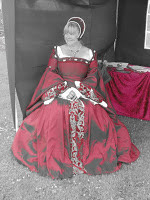 Judith Arnopp is the author of ten historical novels including The Winchester Goose, The Beaufort Chronicle (three book series), The Kiss of the Concubine and A Song of Sixpence. You can find her on Facebook • Twitter • Website • Blog.
Judith Arnopp is the author of ten historical novels including The Winchester Goose, The Beaufort Chronicle (three book series), The Kiss of the Concubine and A Song of Sixpence. You can find her on Facebook • Twitter • Website • Blog.
Published on March 01, 2019 09:17
February 28, 2019
Join Historical Fiction author, Tim Walker, as he searches for the real Arthur. Tim is also sharing an excerpt of his fabulous #NewRelease — Arthur Dux Bellorum #Arthurian #History @timwalker1666
In Search of the Real ArthurBy Tim Walker

Many readers will be familiar with the legend of King Arthur and the knights of the round table, his court at Camelot, the ill-fated love affair between his queen, Guinevere, and Sir Lancelot, and the search for the Holy Grail. These romantic and chivalric embellishments were added by various writers in the Middle Ages to a less glamorous King Arthur in a story first told by Geoffrey of Monmouth in his History of the Kings of Britainin 1136 AD. The effects of these additions to an already fantastical tale is to leave the impression that King Arthur is a made-up character, invented to fill the black hole in British history known as the Dark Ages (specifically, the late fifth and sixth centuries).
 The Round Table experiences a vision of the Holy Grail, by Évrard d'Espinques (c. 1475)
The Round Table experiences a vision of the Holy Grail, by Évrard d'Espinques (c. 1475)However, Geoffrey did not invent Arthur. There are earlier sources, mainly from Welsh literature, who mention a valiant military leader named Artur, Arthur (or Artorius in Latin) who may or may not have been a king. Undoubtedly, one of Geoffrey’s main sources would have been Nennius, the first compiler of early British history, in his work, Historia Brittonum (The History of the Britonsc. 820 AD).
Historian Miles Russell in Arthur and the Kings of Britain (2018), describes this work as, “a structurally irregular mix of chronicle, genealogical table, legend, biography, bardic praise poems, itinerary and folklore.” It is Nennius who gives us our first tantalising glimpse of a ‘real’ Arthur in the listing of his twelve battles. Nennius tells us, “Arthur fought... together with the kings of the Britons and he was Dux Bellorum.” He describes Arthur as a Dux Bellorum (a leader of battles), who leads the combined armies of the kings of Britain against their enemies, primarily the Angles and Saxons. Some interpret this to mean that Arthur was not a king, just a hired military commander. Others argue that Nennius assumes the reader knows that Arthur is one of the kings of Britain and that as Dux Bellorum, he was first amongst equals.Miles Russell is of the opinion that Geoffrey originated the legend of King Arthur by taking the name of a real character in Welsh folklore and then deliberately constructing a Dark Ages superhero by piling on his shoulders the deeds of earlier heroic Briton leaders. This was perhaps done to satisfy his sponsors. It was a record of history they would welcome, the story of a Briton hero who fought against the unpopular Saxons whom they had recently defeated. His story of a busy and destructive Arthur fuelled the imaginations of later writers, who further embellished the legend and imbued him with the more romantic and chivalrous qualities of the day.
 Arthur defeats the Saxons in a 19th-century picture by John Cassell.
Arthur defeats the Saxons in a 19th-century picture by John Cassell.Whilst researching my new novel, Arthur, Dux Bellorum , I came across an article by historian David Nash Ford (www.britannia.com/history/arthur) who speculates on the locations of the twelve battles of Arthur as outlined by Nennius. Ford suggests that Arthur’s first five battles could have taken place in the modern English county of Lincolnshire. He then places other battles further north in Yorkshire/Northumberland and has a further two, possibly three, battles in Scotland. These locations may or may not be correct, but they suited my storytelling, as I send Arthur and his comrades on a journey north, finally arriving at one of the many Roman forts on Hadrian’s Wall. From his base on the Great Roman Wall, Arthur sallies northwards, fighting northern tribes at three locations in Southern Scotland.I think it perfectly achievable that he could cover such distance (some historians have suggested the spread of locations is too wide) – travelling by horseback on Roman roads. It is a mere three hundred miles from Winchester, where the story begins, to Newcastle, at the eastern end of Hadrian’s Wall. He had plenty of time, as my story covers roughly a ten-year period, taking Arthur from late teens to late twenties. There is scope for a second book that takes Arthur southwards to the English Midlands and Wales for more adventures and to complete Nennius’s battle list.There are other problems with Nennius’s list. For one, he mentions Badon Hill, most likely a battle associated with an earlier king such as Aurelius Ambrosius (or, as in my previous book, Uther Pendragon). Also, he doesn’t mention Arthur’s final battle, Camlann, mentioned by earlier Welsh sources and included in Geoffrey of Monmouth’s story.
 The Death of Arthur by John Garrick (1862), depicting a boat arriving to take Arthur to Avalon after the Battle of Camlann.
The Death of Arthur by John Garrick (1862), depicting a boat arriving to take Arthur to Avalon after the Battle of Camlann.My description of Arthur is partly based on the picture I chose for the book cover (‘Arthur Dux Bellorum’ by Gordon Napier). I was instantly drawn to this superb work of art when I recognised one element of Nennius’s scant description of Arthur: “The eighth battle was in Guinnion fort, and in it Arthur carried the image of the holy Mary, the everlasting Virgin, on his shield and the heathen were put to flight on that day, and there was a great slaughter upon them, through the power of Our Lord Jesus Christ and the power of the holy Virgin Mary, his mother.” The artist had clearly been inspired by this description in his portrayal of the young leader. Yes, Nennius was a Christian monk who was clearly keen to portray Arthur as a Christian leader fighting the pagan Saxons and Picts – a theme reflected in my storytelling.What really happened in the late fifth and early sixth centuries? Perhaps one day a lost manuscript will be found, or archaeologists will uncover a definitive battle site or evidence of Arthur’s fortress (almost certainly not called Camelot) or his burial site (almost certainly not Glastonbury Abbey). A recent theory by historian Graham Phillips in his book, The Lost Tomb of King Arthur, makes the intriguing case for the location of Arthur’s kingdom, his final battle and burial place, to be in Powys, central Wales. His entertaining, if tenuous, case hangs on the possibility that ‘The Bear’ or ‘ur Arth’ was a title given to the kings of Powys, and one particular king was the Arthur of legend. There are still plenty of ‘ifs’, ‘buts’ and ‘maybes’ in his extensively researched and passionately-argued case, but perhaps the most lasting impression is his enthusiasm for the search and deep commitment to the task of uncovering the definitive lost history of Arthur.
Arthur Dux Bellorum
by Tim Walker

From the ruins of post-Roman Britain, a warrior arises to unite a troubled land.
Britain in the late Fifth Century is a troubled place – riven with tribal infighting and beset by invaders in search of plunder and settlement. King Uther is dead, and his daughter, Morgana, seizes the crown for her infant son, Mordred. Merlyn’s attempt to present Arthur as the true son and heir of Uther is scorned, and the bewildered teenager finds himself in prison. Here our story begins…
Arthur finds friends in unexpected quarters and together they flee. Travelling through a fractured landscape of tribal conflict and suspicion, they attempt to stay one step ahead of their pursuers, whilst keeping a wary eye on Saxon invaders menacing the shoreline. Arthur’s reputation as a fearsome warrior grows as he learns the harsh lessons needed to survive and acquire the skills of a dux bellorum, a lord of war.
Tim Walker’s Arthur Dux Bellorum is a fresh look at the Arthurian legend, combining myth, history and gripping battle scenes. Although in a series, it can be read as a standalone novel.
Fans of Bernard Cornwell, Conn Iggulden and Mathew Harffy will enjoy Walker’s A Light in the Dark Ages series and its newest addition – Arthur Dux Bellorum.
Excerpt from Arthur Dux Bellorum
MERLYN LED HIS gang through the streets of sleeping Venta, beneath the glow of a pale moon. He glanced about for any signs of movement before rounding a corner, where he came face-to-face with a large, growling dog, its bared teeth and arched back indicating a readiness to strike. He held an arm up to indicate his followers should stop and dropped to eye level with the dog. He whispered in a soothing tone and slowly pulled a piece of roasted boar skin from inside his tunic and offered it. The dog approached, sniffing. Merlyn carefully patted its head and was relieved to see its tail wagging. “Come on,” he urged his followers, allowing the dog to tag along beside him.
They avoided a watchman’s tower at the corner of the wooden stockage that housed the royal buildings, and lined up in the shadow of a warehouse opposite the doorway to the kitchen. Merlyn checked both ways and studied the parapet above the wooden barrier across the street before running across to the door. He rapped the code and waited for a response. Sure enough, he heard bolts being withdrawn and he stood back, gripping his staff in both hands, ready to strike.
Morgaise’s face peered out from under a hood and he smiled with relief. “Come quickly,” she whispered. “The guards are drunk and sleeping.”
Merlyn waved for his men to follow and then entered the compound. Once all eight were inside, Varden, their leader, detailed one man to watch the doorway and two others to scout the yard and be in readiness to cover their escape.
Merlyn turned to Morgaise and asked, “Do you know where the sword of Ambrosius is?”
“The one Artorius pulled from the stone? Yes, it hangs on the wall in the Great Hall, behind the throne and under Mordred’s banner.”
When Varden returned to his side, Merlyn conveyed this information in a whisper. With a nod from Merlyn, Morgaise led them into the kitchen and out into a passageway that connected the hall to the sleeping quarters. She met Anne halfway along the narrow hallway, who indicated they should take a left turn. At the top of a circular stairwell Anne whispered to Merlyn, “At the bottom you will find the jailor sleeping on a wooden bed, but the night watchman is awake. He has the keys to the cells.”
Merlyn nodded. “Anne shall lead us down and Morgaise shall remain here to keep a look out and wait for our return. Varden will go to the hall and get the sword.”
“No,” Morgaise whispered, “the hunting hounds sleep in there by the hearth. They will attack him.”
Varden and Merlyn were confounded by this information. “Barking and snarling hounds would wake the guards,” Merlyn said, deep in thought.
“I sometimes feed the hounds,” Morgaise hissed. “They know me. Let me go there with a plate of meat from the larder and pick the sword on my way out.”
“Will they attack you in the dark?” Varden asked.
“Not if they smell the meats on offer,” she replied.
“Then let us try it,” Merlyn said, not wishing to delay further. “Varden will stand by the door with two men, ready to come to your aid if the hounds are restless,” Merlyn added.
Morgaise led Varden back to the kitchen to raid the larder for joints, whilst Merlyn and the rest of the men descended the stairs behind Anne. At the foot of the stairwell was a chamber lit by a solitary torch glowing from a bracket on the stone wall. To their right was a wooden bed on which slept the large form of Ahern, the jailor, snoring on his back. Anne crept forward towards the row of cells and bumped into a startled watchman, holding a lantern in which the candle had died.
“Oy, what are you doing here?” he growled. Merlyn and his companions shrunk back into the shadows, leaving Anne to answer him.
“I… followed my cat down the steps. Have you seen him?”
“No, I have not…” was all he managed in reply as Merlyn stepped forward and banged his head with the ball at the end of his wooden staff. The young gaoler fell to the floor, unconscious, and they checked whether the sleeping man had been disturbed by the clatter of the lamp on the floor. Ahern grunted and rolled over, facing the wall. Anne picked up the keys from the stricken man and passed them to Merlyn. They moved cautiously down a flight of a dozen steps to a tunnel lined with locked doors. A burning torch fixed to the wall lighted their way. Anne plucked it from its sconce…
Amazon
Tim Walker
 Tim Walker is an independent author based in Windsor, UK. His background is in marketing, journalism, editing and publications management. He began writing an historical series, A Light in the Dark Ages (set in Fifth Century Britain), in 2015, starting with Abandoned, set at the time the Romans left Britain. This was extensively revised and re-launched as a second edition in 2018. Book two, Ambrosius: Last of the Romans, was published in 2017 and the third installment, Uther’s Destiny, was published in March 2018 (winner of One Stop Fiction book of the month award, April 2018). The adventure continues from March 2019 in the fourth book, Arthur, Dux Bellorum.His creative writing journey began in July 2015 with the publication of a book of short stories, Thames Valley Tales. In September 2017 he published a second collection of short stories – Postcards from London. These stories combine his love of history with his experiences of living in London and various Thames Valley towns.
Tim Walker is an independent author based in Windsor, UK. His background is in marketing, journalism, editing and publications management. He began writing an historical series, A Light in the Dark Ages (set in Fifth Century Britain), in 2015, starting with Abandoned, set at the time the Romans left Britain. This was extensively revised and re-launched as a second edition in 2018. Book two, Ambrosius: Last of the Romans, was published in 2017 and the third installment, Uther’s Destiny, was published in March 2018 (winner of One Stop Fiction book of the month award, April 2018). The adventure continues from March 2019 in the fourth book, Arthur, Dux Bellorum.His creative writing journey began in July 2015 with the publication of a book of short stories, Thames Valley Tales. In September 2017 he published a second collection of short stories – Postcards from London. These stories combine his love of history with his experiences of living in London and various Thames Valley towns.In 2016 he published his first novel, a dystopian political thriller, Devil Gate Dawn, following exposure through the Amazon Scout programme. In 2017 he published his first children’s book, The Adventures of Charly Holmes, co-written with his 12-year-old daughter, Cathy, followed In 2018 by a second adventure, Charly & The Superheroes.
Connect with Tim: Website • Newsletter sign-up • Facebook • Twitter • Amazon Author Page.

Published on February 28, 2019 23:00
The Coffee Pot Book Club
The Coffee Pot Book Club (formally Myths, Legends, Books, and Coffee Pots) was founded in 2015. Our goal was to create a platform that would help Historical Fiction, Historical Romance and Historical
The Coffee Pot Book Club (formally Myths, Legends, Books, and Coffee Pots) was founded in 2015. Our goal was to create a platform that would help Historical Fiction, Historical Romance and Historical Fantasy authors promote their books and find that sometimes elusive audience. The Coffee Pot Book Club soon became the place for readers to meet new authors (both traditionally published and independently) and discover their fabulous books.
...more
...more
- Mary Anne Yarde's profile
- 159 followers



